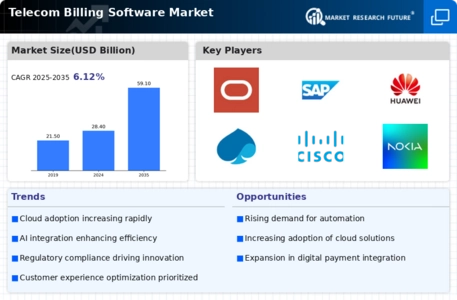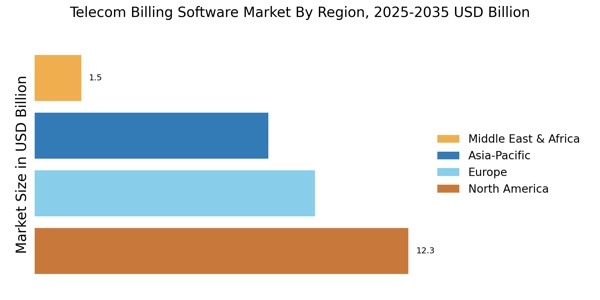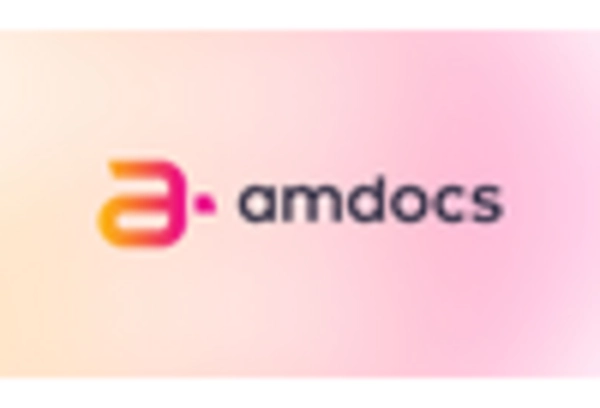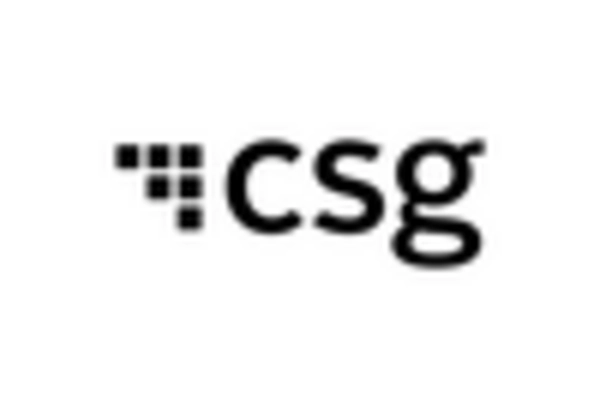Shift Towards Digital Transformation
The shift towards digital transformation is a key driver in the Telecom Billing Software Market. Telecom companies are increasingly adopting digital technologies to streamline operations and enhance customer engagement. This transformation necessitates the implementation of advanced billing solutions that can integrate seamlessly with other digital platforms. The market for telecom billing software is anticipated to grow as companies seek to leverage digital tools for improved billing accuracy and customer service. With the increasing reliance on digital channels, telecom billing software providers are innovating to offer solutions that facilitate online billing, mobile payments, and real-time account management, thereby meeting the evolving demands of consumers.
Regulatory Compliance and Data Security
In the Telecom Billing Software Market, the emphasis on regulatory compliance and data security is intensifying. With the proliferation of data protection regulations, such as GDPR and CCPA, telecom companies are compelled to invest in billing software that ensures compliance. The market for telecom billing solutions is projected to reach USD 10 billion by 2026, driven by the necessity for secure and compliant billing processes. This necessitates the integration of advanced security features, such as encryption and access controls, into billing systems. As a result, telecom billing software providers are focusing on developing solutions that not only streamline billing processes but also safeguard sensitive customer data.
Rising Demand for Subscription Services
The Telecom Billing Software Market is experiencing a notable surge in demand for subscription-based services. As businesses increasingly adopt subscription models, the need for sophisticated billing solutions becomes paramount. This trend is evidenced by the fact that subscription revenue is projected to grow at a compound annual growth rate of over 20% in the coming years. Telecom billing software must adapt to manage recurring billing cycles, handle various pricing tiers, and ensure compliance with regulatory requirements. Consequently, providers of telecom billing solutions are innovating to offer features that cater to this evolving landscape, thereby enhancing their market position.
Increasing Competition Among Telecom Providers
The Telecom Billing Software Market is influenced by the increasing competition among telecom providers. As the market becomes saturated, companies are striving to differentiate themselves through enhanced customer experiences and innovative billing solutions. This competitive landscape is prompting telecom operators to seek advanced billing software that can support diverse pricing models and provide detailed analytics. The demand for flexible billing solutions is expected to grow, with the market projected to expand at a CAGR of 15% over the next five years. Consequently, telecom billing software providers are focusing on developing customizable solutions that cater to the unique needs of various telecom operators.
Technological Advancements in Billing Solutions
Technological advancements are significantly shaping the Telecom Billing Software Market. The integration of artificial intelligence and machine learning into billing systems is enhancing operational efficiency and accuracy. These technologies enable telecom companies to automate billing processes, reduce errors, and improve customer satisfaction. The market is witnessing a shift towards real-time billing solutions, which allow for immediate invoicing and payment processing. This shift is expected to drive the telecom billing software market to an estimated value of USD 8 billion by 2025. As telecom operators seek to leverage these advancements, software providers are compelled to innovate continuously to remain competitive.


















Leave a Comment